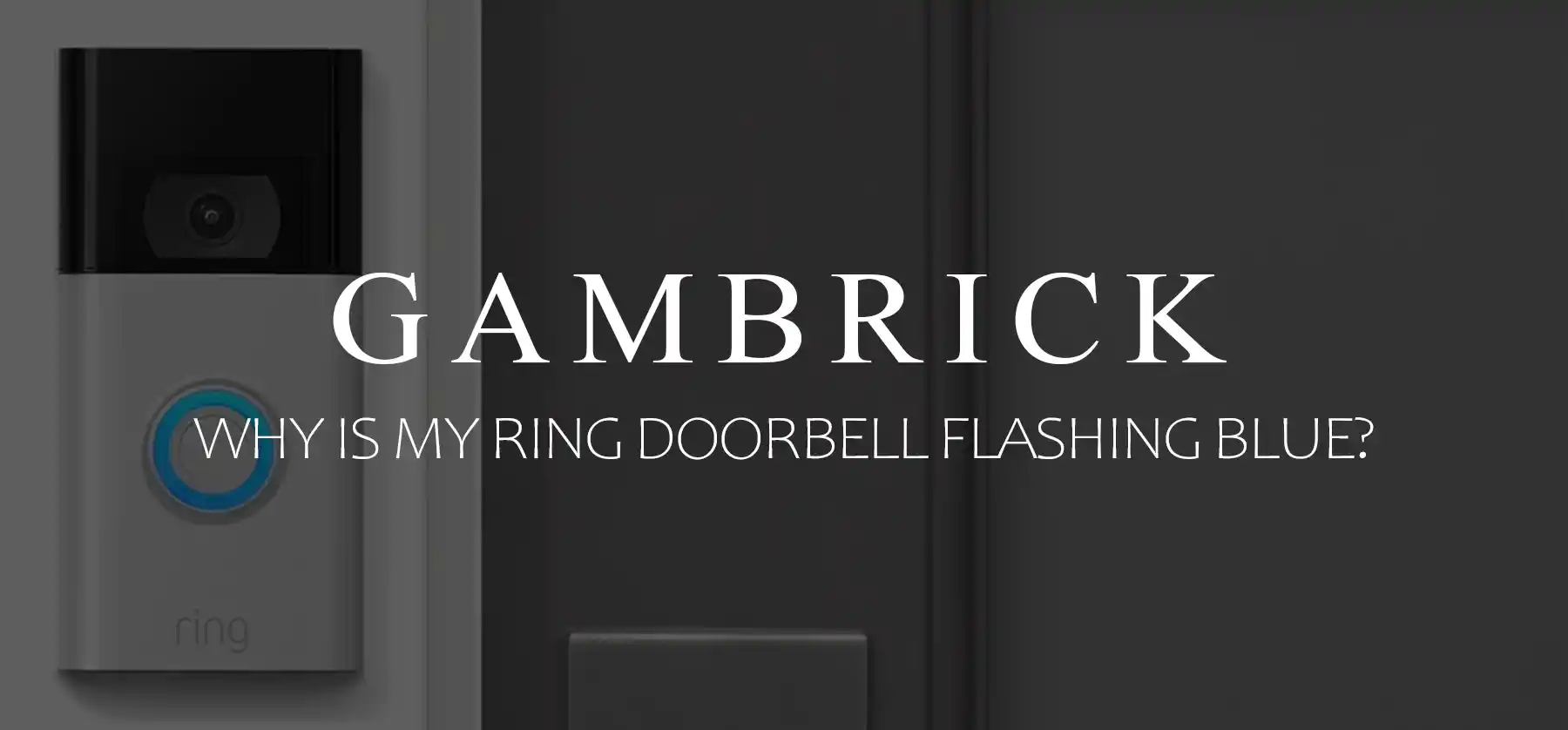
Why Is My Ring Doorbell Flashing Blue?
Every Ring Doorbell model has a circular LED light on the front that lights up in different ways based on what’s going on with the device. A Ring Doorbell flashing blue, white, or red light provides helpful information about the status of the device or what action it’s currently performing. There are a few different reasons why a Ring Doorbell flashes blue. A flashing blue light could indicate the device is currently charging or has a low battery, is connecting to a network, or has been successfully set up. It can also mean that someone is accessing the Live View feature, essentially viewing the camera feed in real-time.
If the doorbell has just been set up or has lost and regained power, the blue flashing might indicate that the device is booting up, has been reset, or the front button has been pressed.
Additionally, during firmware updates, which the device periodically receives to enhance performance and security, the light might flash blue.
Some Ring models may also flash blue when motion is detected or during active audio streaming, signifying two-way communication.
I install a Ring Doorbell on every new home we build as part of the home’s security system. It’s crucial to observe the flashing pattern and any accompanying colors to determine the exact reason. Always refer to the user manual or official documentation for model-specific information.
In this guide, I’ll explain everything you need to know about a Ring Doorbell that’s LED light is flashing blue.
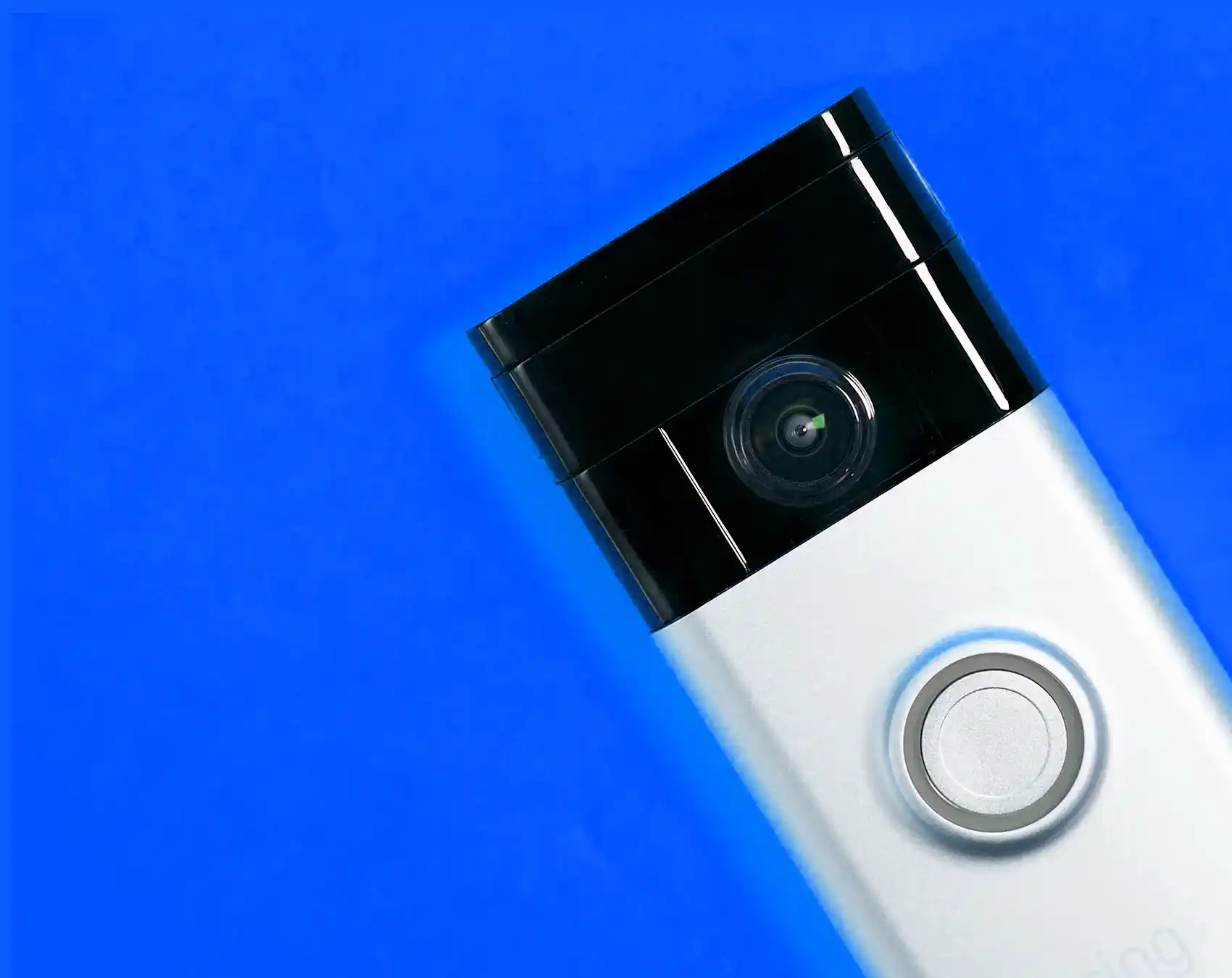
What Ring Doorbell Flashing Blue Light Means
The Ring doorbell is more than just a contemporary door chime; it’s a sophisticated piece of technology designed to improve home security and convenience.
One of its important features is the LED indicator lights on the front of the device. These lights serve as a visual guide, providing feedback about the device’s current status or any actions it’s performing.
Here’s a deeper dive into understanding what these lights mean:
Purpose of LED Indicators
At a basic level, LED indicators inform users about:
- Device health (e.g., battery status, connection status)
- Activity alerts (e.g., motion detection, live view activation)
- System operations (e.g., firmware updates, boot-up sequences)
Colors & Patterns
The Ring Doorbell doesn’t just flash random lights. Each color and flashing pattern has a specific meaning.
- Steady Light: Usually indicates a stable status or operation.
- Flashing or Pulsing Light: Often signifies activity, alerts, or potential issues needing attention.
Common LED Colors
While blue is frequently observed, the Ring Doorbell uses various colors, including:
- Blue: A blue light flashing is associated with activities like live view, boot-up, or audio streaming.
- White: Often related to connectivity and setup modes.
- Red: A red light typically indicates issues, such as low battery or hardware malfunction.
Model Variations:
Different Ring Doorbell models have distinct LED patterns. It’s important to know your model, as a blue light on one might mean something different on another.
Interpreting the Lights
It’s not enough just to see the lights; understanding them is what matters. The Ring Doorbell comes with a user manual detailing these light patterns.
The LED indicators on your Ring Doorbell are there to help you. But they mean different things on different model Ring Doorbells. So it’s important to know what the flashing lights mean on your model Ring.
By paying attention to them and understanding their meanings, you can make sure the device is working properly and address issues right away.
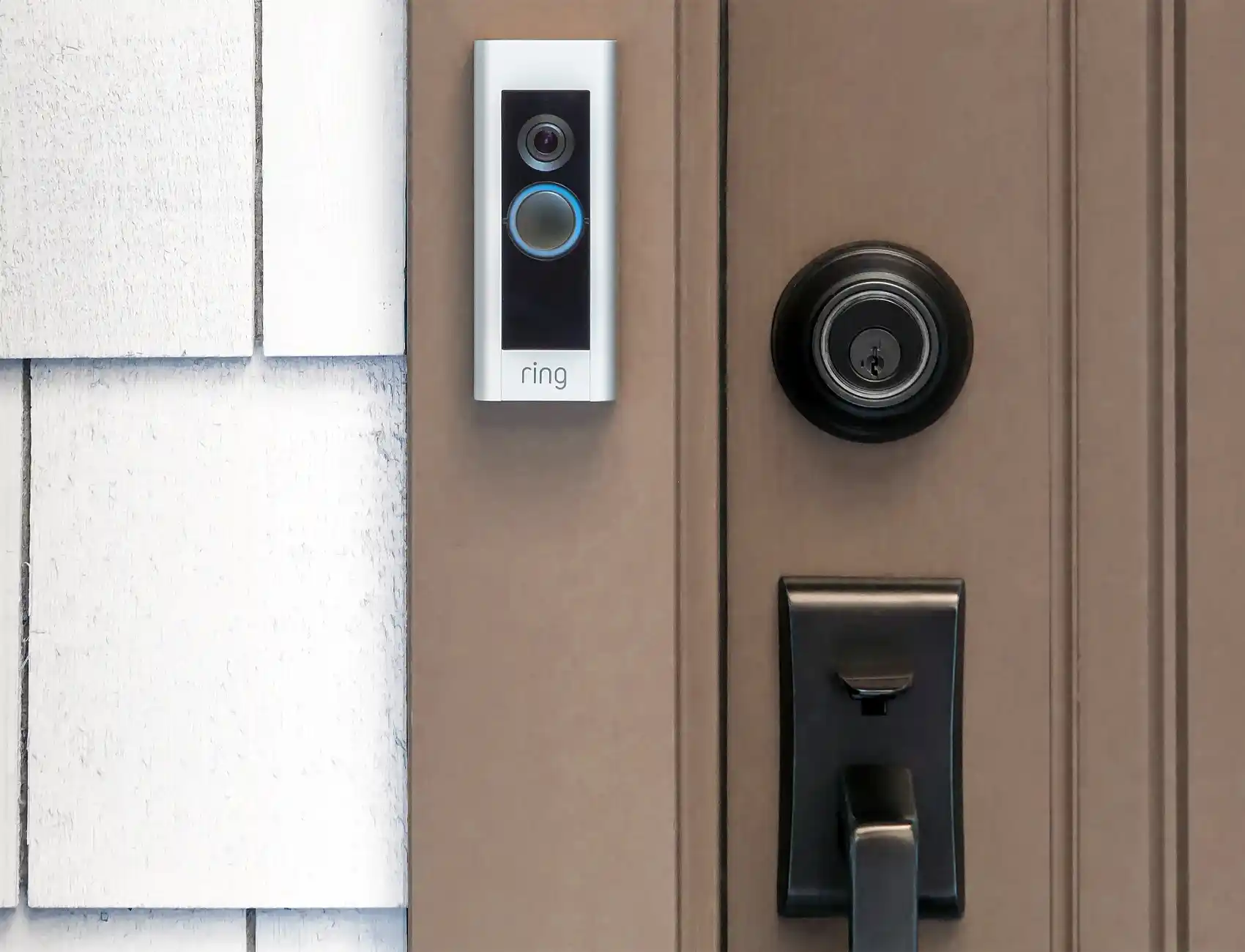
What A Flashing Blue Light Means On Specific Ring Doorbell Models
All Ring doorbell models use a circular LED light on the front to communicate the device’s status or ongoing actions.
The blue light patterns differ among models, so it’s very important to what the flashing light means for your particular model.
The blinking blue LED light falls into three primary categories:
- Ring Doorbell models from the first to fourth generations display three distinct blue light patterns.
- Devices like the Ring Doorbell Wired and Ring Peephole Cam have six unique blue light patterns.
- The Ring Doorbell Pro and Pro 2 models have seven specific blue flashing light patterns.
Understanding these patterns can help you better navigate and respond to your Ring Doorbell’s signals.
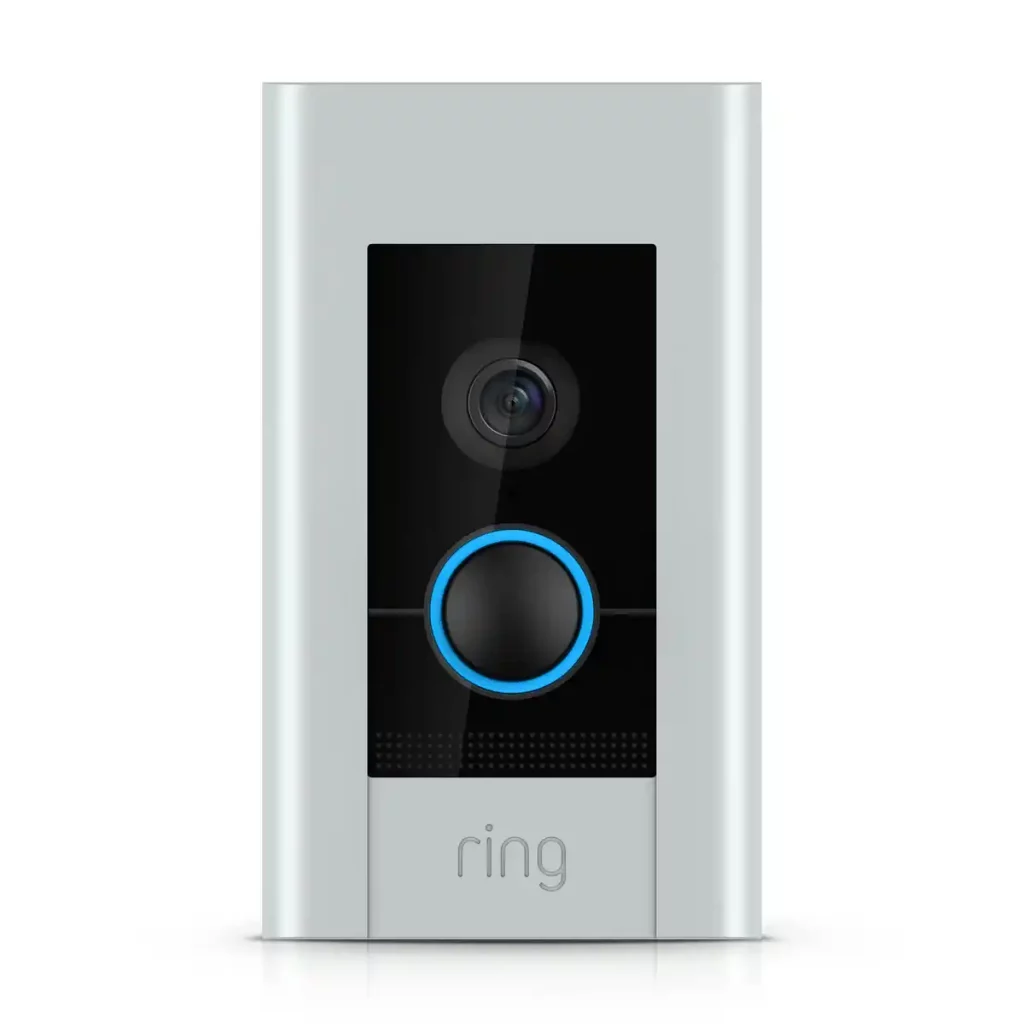
Ring Video Doorbell 1st To 4th Generations
There are three flashing blue light patterns for Ring Video Doorbell models generation 1 to 4.
This includes:
- Ring Video Doorbell 1st Generation.
- Ring Video Doorbell 2nd Generation.
- Ring Video Doorbell 3 and 3 Plus.
- Ring Video Doorbell 4.
If you have one of these Ring Doorbell models, the flashing blue light is easier to understand because there are just three patterns.
1. Flashing Blue Light Moving Upwards
When you set up the Ring Doorbell for the first time, you have to connect it to a network. A flashing blue light moving upwards means the device is currently connecting to the network.
2. Four Blue LED Light Flashes
Once you’ve completed your Ring Doorbell’s setup process, you’ll see four blue flashes from the LED lights. These four blue flashes mean the doorbell is finished setting up.
3. Flashing Blue Light Cycling Around
If you see a flashing blue light moving in a circular motion, it means your Ring Doorbell is charging. When the blue light stops spinning and turns solid blue, it means the battery is full.

Ring Doorbell Wired And Ring Peephole Cam
The Ring wired doorbell and Ring peephole cam devices have different LED indicators than first generation Ring Doorbells.
There are six flashing blue light patterns for these models instead of just 3 for generations 1 through 4, with some similar indicators to previous models.
This makes it a little harder to interpret what the flashing lights mean.
For the Ring Doorbell Wired and Ring Peephole Cam models, the blue light pattern serves various notification purposes, summarized as follows:
1. Spinning Blue Light
Indicates a regular button press on the device.
2. Flashing Blue Light Moving Upwards
An upward-moving blue light during initial setup; this flashing blue light shows the device is connecting to the network.
3. Four Blue LED Light Flashes
Represents a successful network connection and completion of the setup process.
4. Flashing Blue Circle
This pattern, recurring at one-second intervals, signifies the device is booting up. It can be observed post-firmware updates as well.
5. Solid Blue Light
Appears when the device’s speaker is activated.
6. Rapid Flashing Blue Light
Indicates the device has been reset to its default factory settings, followed by a spinning white light to confirm the reset’s success.
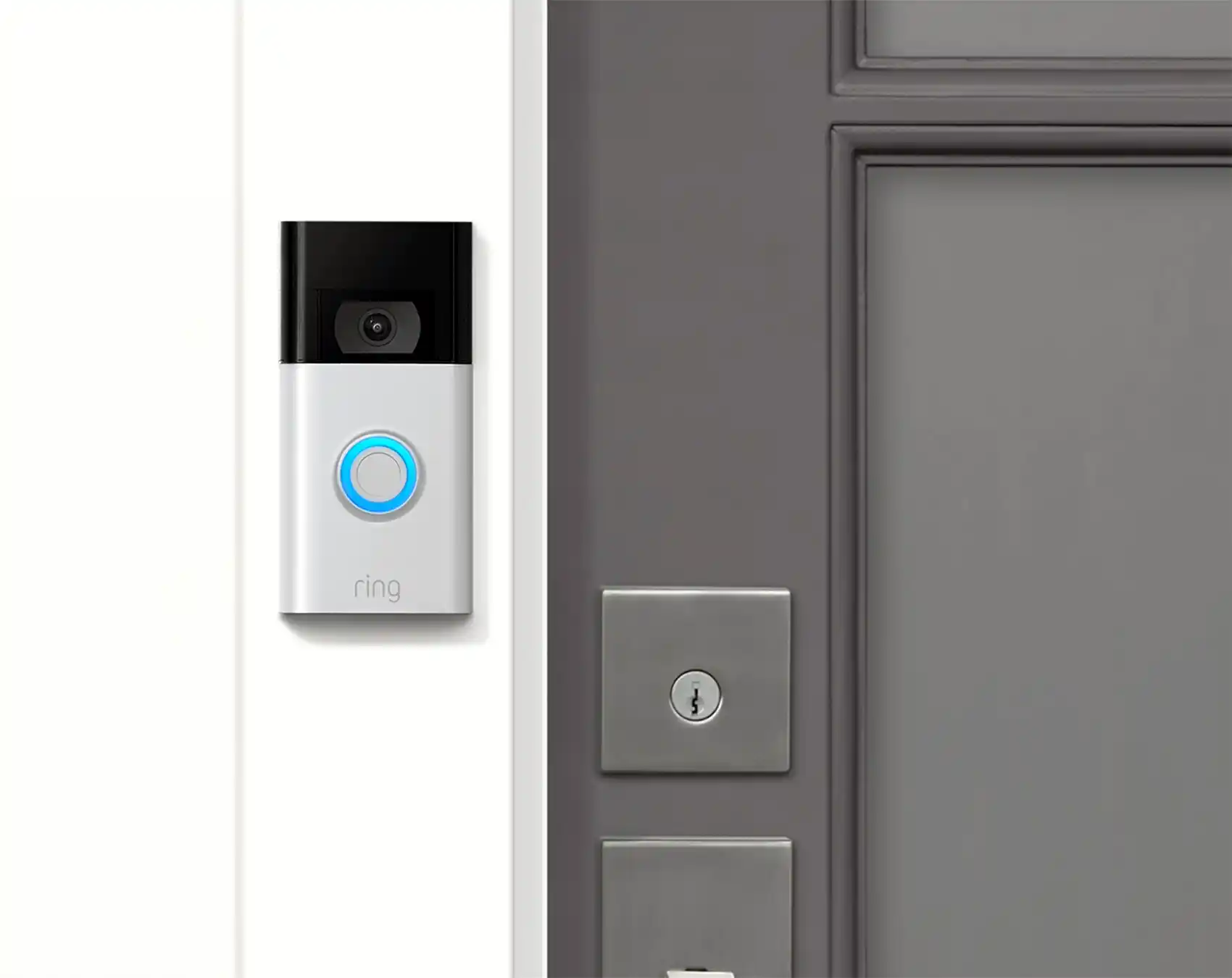
Ring Video Doorbell Pro And Pro 2
Ring Video Doorbell Pro and Ring Video Doorbell Pro 2 models have seven different blue LED light patterns. This makes the flashing blue light on these models the hardest to understand.
1. Spinning Flashing Blue Light
A flashing blue light spinning around the circular LED lights a few times when the front buttons are pressed.
2. Blue Light Moving Upwards
A flashing blue light moving upwards means your device is busy connecting to your selected Wi-Fi network. This is a universal signal for all Ring Doorbell models.
3. Four Blue LED Flashes
When you see four blue LED lights flash four times, it means your device is properly configured and ready to function.
4. Flashing Blue Circle
If you see the circular LED lights flash blue in one-second intervals, it means the device is busy booting up after being turned on, restarted, or updated.
5. Solid Blue Light
When you see a steady blue light, it indicates that the speaker of your Ring Pro or Pro 2 device is active and ready for any two-way communication or audio alerts.
6. Rapid Blue Lights Flashing
Rapid flashes of blue light mean your Ring Doorbell Pro or Pro 2 model has been restored to its default factory settings.
7. Top Half LED’s Flashing Blue
If only the top half of the circular LED is a blinking blue light, the meaning depends on the state of your Ring Doorbell. During set up, the top half flashing blue means an incorrect password was entered. After setting up, it means the device is charging.
Troubleshooting Common Issues
Every technological device, no matter how advanced, can occasionally have issues. The Ring Doorbell is no exception.
By identifying and addressing common issues associated with the blue flashing light, users can ensure their device operates properly and doesn’t have any long term issues.
Find Out Why Your Ring Doorbell Is Flashing Blue
If you have a Ring doorbell blinking blue, pay attention to the way the lights flash.
The pattern, what lights are flashing, and how the lights move will tell you what the blinking means based on the model doorbell you have.
Once you’ve figured out how the lights are flashing, look for the pattern based on the model Ring Doorbell you have.
Once you figure out the light’s meaning, you can deal with the issue.
Here are some common issues to watch out for.
Low Battery:
- Explanation: A blue flashing light typically means a low Ring doorbell battery.
- Action Required: Charge the battery or replace it if it’s a model with replaceable batteries.
Live View Activation:
- Explanation: The blue light can flash when someone accesses the Live View feature. It essentially means someone is viewing the camera feed in real-time.
- Action Required: If this is unexpected, consider checking who has access permissions to your device.
Device Boot-Up:
- Explanation: After a power interruption or when pressing the setup button, the blue flashing light can indicate the device is initiating its boot-up sequence.
- Action Required: Give it some time. The device usually resumes normal operations once boot-up completes.
Firmware Update:
- Explanation: Ring doorbells periodically receive firmware updates to improve functionality or security. A blue flashing light can be observed during such updates.
- Action Required: Let the device update without interruptions. It’s essential for the smooth functioning of your Ring Doorbell.
Motion Detection (Specific to some models):
- Explanation: Depending on the settings and model, a blue flash might be the device’s way of indicating detected motion in its vicinity.
- Action Required: If you find this alert unnecessary or too frequent, consider adjusting the motion sensitivity settings.
Audio Streaming:
- Explanation: When the device detects two-way communication or is streaming audio, a blue light might flash, signaling the active audio transmission.
- Action Required: The doorbell might be in use or someone might be trying to communicate.
Restart Or Reset Your Ring Doorbell
In many cases, a simple reset can solve minor bugs and issues. But before you do, make sure you understand what the lights mean.
Here are some flashing patterns to look out for along with what they mean, and how you can fix them:
Persistent Blue Flashing:
- Problem: The blue light keeps flashing continuously without any obvious reason.
- Solution: Try a soft reset by power cycling the device. If it doesn’t resolve, a hard reset or factory reset might be needed. Refer to the manual before doing a factory reset, as this will erase all settings.
Blue Flashing with Other Colors:
- Problem: The blue light flashes in combination with other colors, like white or red.
- Solution: Combined LED colors typically indicate compound issues. For instance, blue and white might point towards WiFi connectivity problems. Consult the user manual for the specific meaning of combined lights and follow the recommended solutions.
Not all Ring Doorbell models use WiFi. Some are hard wired to an Ethernet cable which supplies both power and connectivity. For a list of the best wireless doorbells without WiFi, click the link. If you have issues with your Ring going offline, changing to a hardwired device may be a good solution.
Unintended Live View Activations:
- Problem: The blue light flashes to indicate Live View, even when you’re not accessing it.
- Solution: Check who has access to your Ring Doorbell. It’s possible someone else with permission is accessing the feed. If this is unintended, consider modifying or revoking access.
Failed Firmware Update:
- Problem: The blue light indicated a firmware update, but the device isn’t functioning correctly afterward.
- Solution: Ensure the device maintains a stable power and internet connection during updates. If issues persist, contact Ring customer support for guidance.
Motion Detection Sensitivity:
- Problem: The device frequently flashes blue for motion, even for minor movements like a passing car.
- Solution: Adjust the motion sensitivity settings via the Ring app. This will allow the device to only alert you for more substantial movements, like a person approaching.
Audio Streaming Issues:
- Problem: The blue light indicates active audio, but you can’t hear anything.
- Solution: Check the device’s speaker volume and ensure it isn’t muted. If issues persist, consider checking for obstructions or damages to the speaker.
How To Find Out Which Ring Doorbell You Have
Understanding what the flashing blue lights means requires knowing which Ring Doorbell model you have.
To find out, Simply open the Ring app on your smartphone > navigate to Device Health > tap the menu (≡) on the top left corner > tap Devices > select the doorbell or camera you want to learn about.
If you have any questions or comments about how to reset a Samsung dishwasher, email any time.

John Mazzuca | About | More Posts |
Custom Home Builder
John Mazzuca is a custom home designer and builder at Gambrick with over 25 years experience in the construction industry. John has designed, built and/or remodeled hundreds of homes, small buildings, and commercial projects. He writes about business, real estate, home building, and household electronics. His work has been featured in Fox Business, Better Homes & Garden, House Beautiful, and more.




















